Growing Cherries from seed is a cheap and fun activity. Commercial Cherries are grown from grafts, so growers know what they are getting. Planting Cherry pits is a project for home growers who want to take up a challenge and are looking for an ornamental plant. Saving and planting Cherry pits after enjoying the fruit can be rewarding. Choose a spot with enough sun to plant Cherry seeds and press the pit under the soil. You may want to start Cherry seeds indoors and can plant them outdoors in the spring.
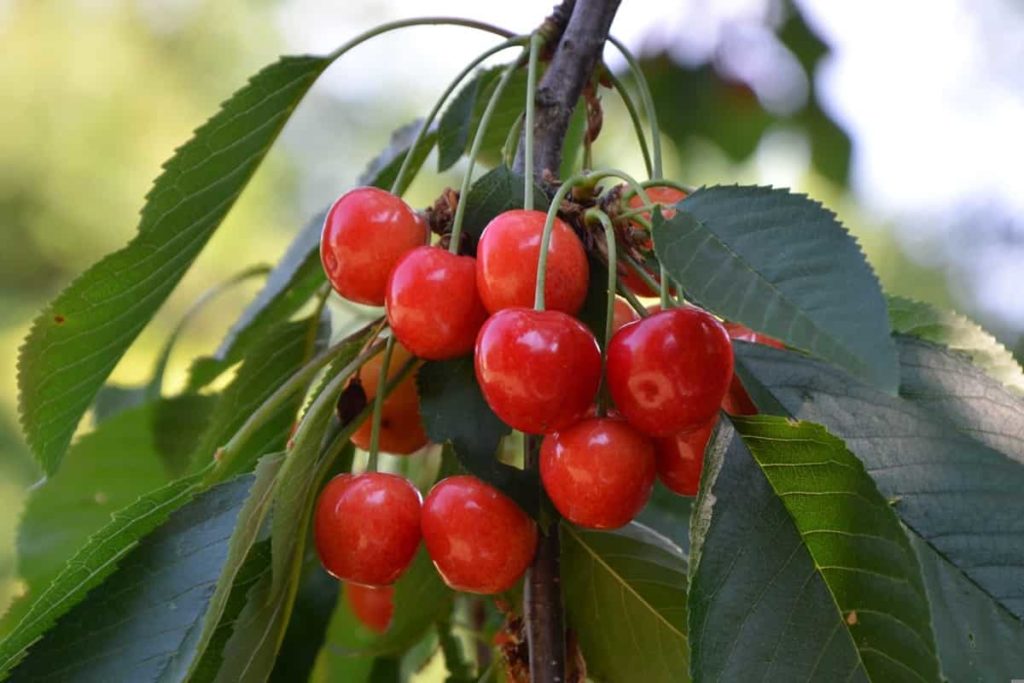
How to plant cherries from seeds
How long does it take to get fruit from a Cherry seed?
- Growing Cherry trees from seeds are not only a cheap way to grow a Cherry tree, but it’s also much fun and delicious. Cherry trees are easy to plant and, between November and March, are best planted while dormant. Bare root trees are only available during dormancy for immediate planting, but containerized trees are available throughout the year.
- Cherry trees are expected to bear fruit within seven to 10 years. Since most Cherry trees require a different variety for pollination, the fruits may not resemble the parent plant.
- When grown from seeds, sweet Cherries can start producing fruit in seven to 10 years. Sour Cherries can start producing fruit in four or five years. However, the tree won’t grow true to its parents, so the fruit doesn’t resemble either of the parent tree’s ancestors. Some trees are grown from seed and never bear fruit.
Do you need 2 Cherry trees to produce fruit?
Sour Cherry trees are self-pollinators. This means they don’t need more than one tree to produce fruit. However, if you plant sweet-type plants, you’ll need at least a few trees for proper Cherry tree pollination. Sour or tart Cherries are self-fruitful. Only one sour Cherry tree must be planted for pollination and fruit set. Wide sweet Cherry varieties cannot produce fruit from their pollen and are considered fruitless on their own. These plants require cross-pollination for the fruit set.
Growing Cherry trees in pots
- You can grow Cherry trees in large pots or containers with good drainage. With a careful selection of cultivars and proper growing practices, it is possible to grow fruits such as Cherries in containers. It’s a great way to grow fruit in a small garden, especially when it keeps trees smaller than if they’re grown in the ground.
- Cherry trees growing in containers require a deeper and wider pot than the tree root ball, so the Cherry has some space to grow. A 15-gallon pot is large enough for 5 feet. If the drainage holes seem large, cover them with some mesh screening or landscape fabric and some rocks or other drainage materials.
In case you missed it: How to Prepare the Soil for Cherry Trees: Best Soil Mix, pH, and Compost
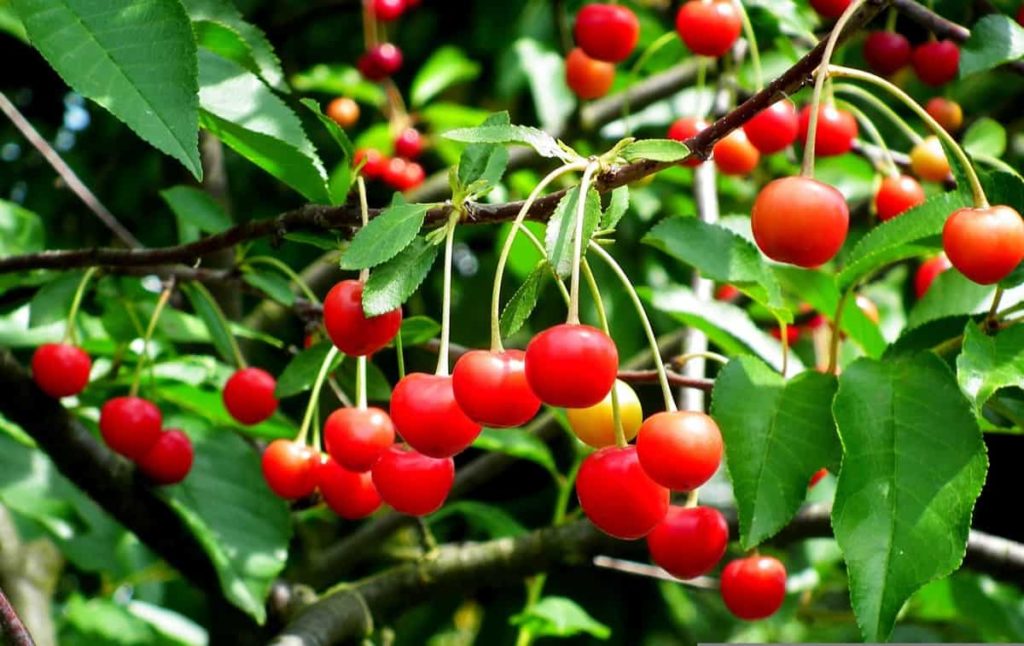
Growing Cherry from seed
- While many backyard fruit growers buy young trees in nurseries, learning how to grow Cherry trees from seeds or pits can give you showy, fragrant flowers and delicious fruit in late spring and early summer. You can grow Cherries at home using pits from locally grown Cherries, but fruit production using this process will take longer. You can use pits from Cherries that are grown locally. Avoid using pits from grocery stores as they are incompatible with your area’s climate.
- Cherry seeds don’t grow true to seed, meaning the tree won’t be the same type as its parent. You may find a tree that can’t survive in your climate or local diseases or doesn’t bear tasty fruit. But you can find a beautiful new tree and have fun.
Water requirement for growing Cherry
- You should give one inch of water every two weeks when Cherry trees are young. It may be a good idea to maintain rainfall with weather reports to see how much rainwater your trees are getting. In times of drought, your trees may need a little extra water. You don’t have to water your Cherry tree every day. Young Cherry trees require 2 to 3 inches of water every 1 to 2 weeks. Mature Cherry trees require only 1 inch of water every 1 to 2 weeks.
- You should give enough water to your Cherry tree to soak the ground around the roots. Once every 7 to 10 days (or even once every two weeks) is enough. Worse than dry, thirsty roots are waterlogged; there are drowning roots. Too much water can also suffocate the roots of the Cherry tree, causing stunted trees that do not bloom or bear fruit and can ultimately lead to plant death. More Cherry trees die from more water than too little.
What month do Cherry trees produce fruit?
- The Cherry is a drupe of spherical shape, and the color is usually intensely red until almost black. The Cherry tree is one of the gardens’ most common fruit trees. Cherry trees bloom in spring and bear Cherries in late May, June, or early July. After planting, a sweet Cherry tree bears fruit in 5 to 9 years, while a sour Cherry tree bears fruit in 4 to 6 years. Of course, the time when the Cherry tree blooms and bears fruit will depend on the climate.
- Once your Cherry blossoms produce fruit buds, you can usually expect to harvest ripened Cherries from early June to late July. Sweet Cherry varieties, which are great for fresh food, ripen a little earlier than sour Cherries.
The best fertilizer for Cherry trees
- Cherry trees benefit from a bit of fertilizer. You should use a fertilizer that is low in nitrogen in late winter or early spring. It’s the best time to fertilize about a month before your trees flower. Cherry trees are light feeders and prefer low nitrogen fertilizers such as 5-10-10 or 10-15-15. You should not add too much fertilizer, or you can create an unbalanced tree, affecting fruit production and leaving the tree susceptible to pests and diseases.
- If your Cherry tree grows less than 8 inches a year, it may need Cherry tree fertilizer. If so, buy a balanced granular fertilizer, such as 10-10-10. The amount of fertilizer depends on the years since the tree was planted in your garden.
In case you missed it: 16 Common Cherry Tree Problems: How to Fix Them, Solutions, and Treatment

The best climate for growing Cherry
- Sweet Cherries need mild temperature and low humidity, while tart Cherries require cooler climates and about two months of winter temperatures below 8°C. Like other deciduous fruit trees, including Apples, Pears, and Peaches, Cherry trees require a certain number of cold nights to produce maximum yield. Sweet Cherry trees need 700 to 900 hours of chill or a temperature of 8°C or less.
- Cherry trees prefer eight to 10 hours of direct sunlight daily. Winter temperatures should rarely fall below -23°C, but there needs to be enough chill to keep trees dormant until it’s time to bloom. Cherries are grown in all areas where winter temperatures are not very severe, and summer temperatures are moderate. They need winter cold to open in the spring. Trees bloom very early in spring, immediately after Peaches and before Apples.
Spacing between Cherry trees
- Cherry trees need proper spacing to thrive. Sweet Cherry trees require a distance of at least 25 feet, and sour Cherry trees require at least 18 feet between trees. While you can plant trees further apart, don’t plant them too close to the minimum required spacing. Cherry trees work best in deep, well-drained soils with a pH 6.0-7.0. Space sweet Cherries at a distance of 35 to 40 feet; dwarfs, 5 to 10 feet apart. Space tart Cherry at a distance of 20 to 25 feet. Dwarfs, at a distance of 8 to 10 feet.
- You should plant wall-trained trees at least 8 inches from the wall to allow radial growth of the stem. Dig the planting hole about 18 to 16 inches from the wall, so the roots are away from the base.
The best soil for Cherry trees
- Cherry trees grow best in the deep, at least 4 feet, well-drained loam soil. They will tolerate fewer desirable soils but may perform poorly on excessively sandy, heavier, or wet soils. Partially fill the container with commercial potting soil or a mixture of 1 part sand, 1 part peat, and 1 part perlite. You should place the tree on top of the soil media and fill it around it with additional soil ranging from 1 to 4 inches under the rim of the container.
- Dig a large enough hole so all the roots can spread and lay flat. Dig 4 feet down, and mix the soil you dug from the hole with well-rotted compost. This will increase drainage in the soil and add a source of nutrients in the future when compost breaks down. Another critical aspect of Cherry tree growth is providing them with essential food and nutrients. Slow-release fertilizers, earthworm castings, fish by-products, and other organic materials added to your soil will increase your Cherry trees’ chances of success.
In case you missed it: Best Fertilizer for Cherry Trees: Homemade, Organic, Compost, Liquid, Natural, NPK, Requirements, When and How to Apply
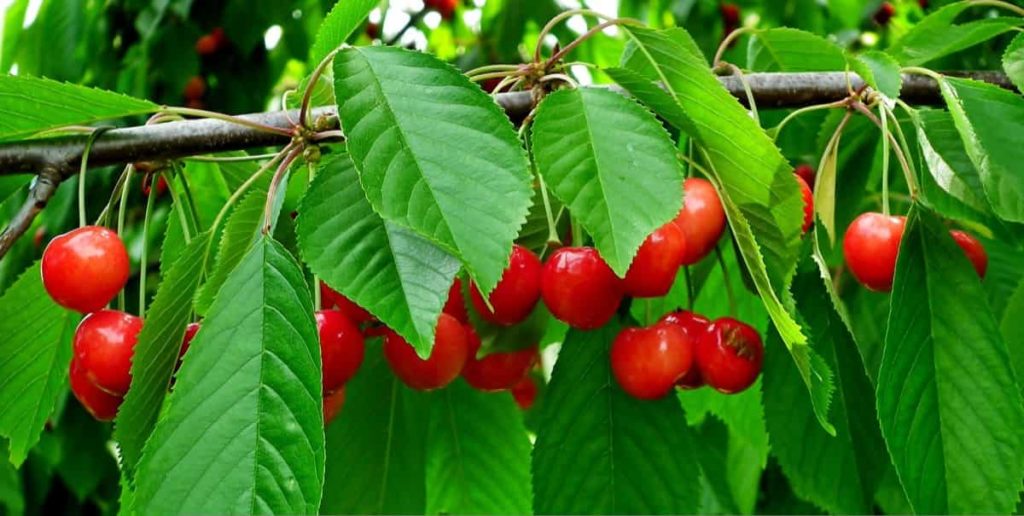
Growing Cherry trees indoors
Growing Cherry blossom trees indoors are a great choice. They are easier to maintain than many indoor plants and have beautiful flowers every spring. Even healthy Cherry blossom trees benefit from a bit of time outdoors, especially in the summer and early autumn. When growing a Cherry tree in a pot, you can bring it indoors during the harsh winter or boiling summer heat. You can enjoy spring’s fragrant, showy Cherry blossoms without leaving home. However, if you expect to cut fruit from your Cherry tree, you’ll need to find a variety of Cherries that meet specific criteria.
Why did my Cherry tree not blossom?
- The weather is the most common reason Cherry trees won’t flower properly. Both climate and weather will play an essential role in how well your Cherry trees will do. If you plant a Cherry tree unsuitable for your climate, you probably won’t get excellent results.
- Cherry blossom Trees require much sunlight and rich and fertile soil; check the recommended growing zone for your species of flowering Cherries. You should choose a place in the garden or yard that provides at least 6 hours of direct sunlight daily.
Do you prune Cherry trees?
- Cherry trees should be cut yearly to maintain their shape and encourage healthy growth. Cutting Cherry trees will also result in a better fruit harvest, as removing branches will increase the sunlight exposure of the remaining shoots. Heading means cutting off the leader’s top, the main trunk, to encourage the growth of lateral branches. This is done within the first year to control the tree’s shape.
- Pruning should begin as the buds emerge, but wait until all possibilities of extremely cold temperatures have passed to avoid a possible cold injury, as small trees are more susceptible to it. Mature Cherries can also be pruned in early spring or even after they bear fruit. Leave a few small branches on the lower trunk to encourage trunk strength. Cut the back branches into one-third of their length. Remove shoots under the selected laterals. By the second spring, the main laterals should have produced shoots on its side, pruning in the outward-faced bud to produce an open crown.
In case you missed it: Cherry Growing Tips, Techniques, Ideas, and Secrets
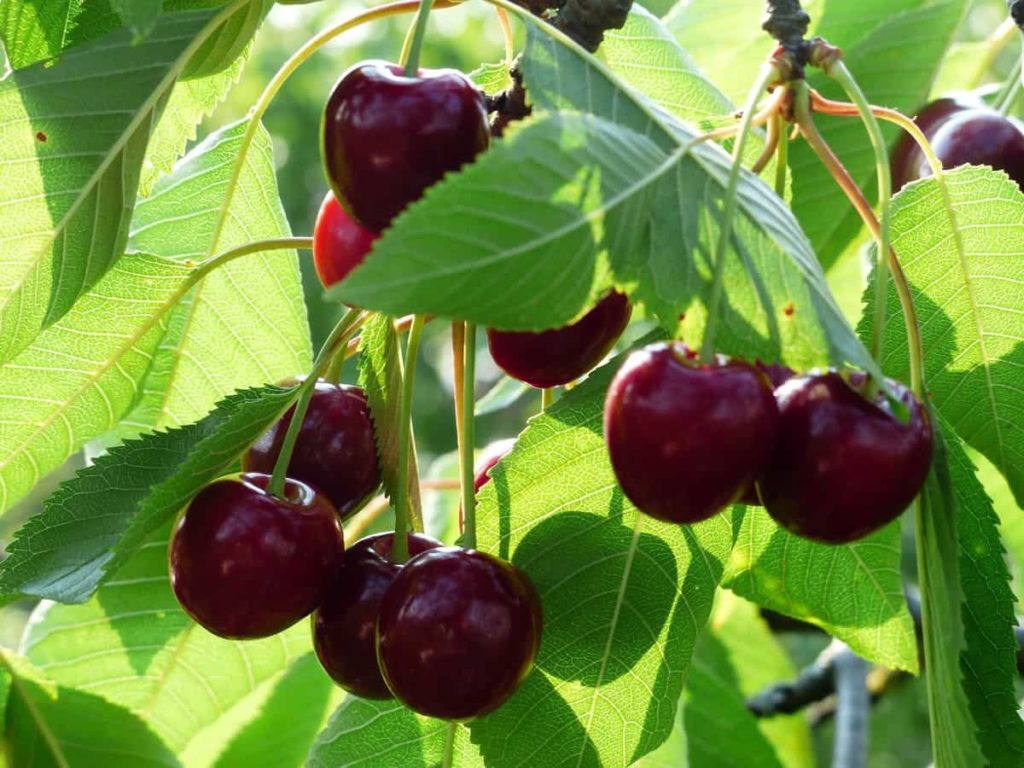
The best month to plant Cherry
- The best planting time for Cherries is spring and autumn when the weather is mild. The ground is often harder during winter when it can freeze, and in some climates during the summer, when exposed land can be partially backed.
- Cherry trees thrive in a place that receives full sun and has well-drained, fertile soil. You should give at least 6 to 8 hours of sun daily. Sunlight is essential for fruit production and quality and helps prevent fungal problems from getting a foothold.
- You can plant Cherry trees in early spring or late autumn (when the ground is soft and moisture content is high) in a sunny site with good air circulation and deep, well-drained soil.
Why is my Cherry tree not fruiting?
- When a Cherry tree blooms but no fruit appears, it’s a good sign of poor pollination. Do not keep your co-pollinators more than 100 feet away.
- The climate and weather affecting the tree can be essential in non-bearing Cherry trees. Plant fruit trees that are recommended for your climate. In addition, the biggest reason why the Cherry tree does not bear fruit is frost.
Germinating Cherry seed
- You can grow Cherries at home using locally grown Cherry pits, but fruit production using this process will take longer. Put the seeds in a bowl of hot water. Soak them for a few minutes and then gently clean them to remove any pieces of fruit pulp sticking to them.
- Fill the pots with seed compost and sow the stones at a depth twice their size. Keep the pots somewhere very cold, i.e., in the refrigerator, for 2 to 3 months. Remove the pots from the refrigerator in March; moisten the soil, and then place them on the window sill to grow.
- Put two to three pits in a small container filled with planting medium and water the seeds. Keep the soil moist. When the Cherry plants are 2 inches long, thin them, remove the weakest plants, and leave the strongest seeds in the pot. Cherry seeds germinate about 30 days after stratification in the refrigerator or 90 to 150 days after planting outside in the garden.
In case you missed it: How to Grow Sunflowers from Seed to Harvest: Check How this Planting Guide Helps Beginners
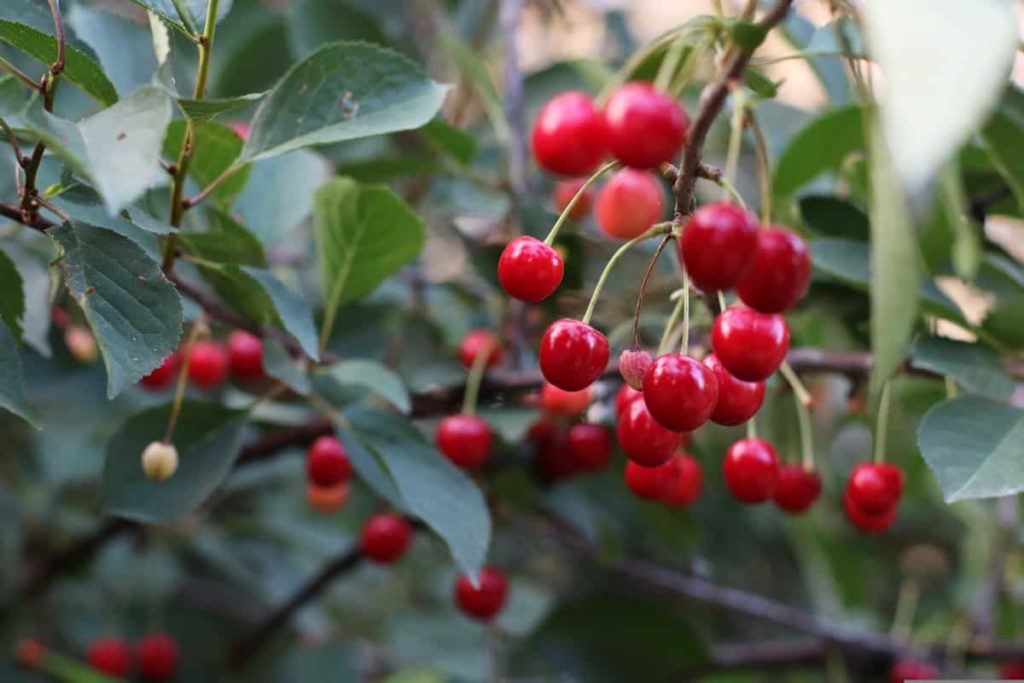
Cherry picking tips
- Once they’re off the tree, the Cherries don’t ripen well, so it’s best to wait until they’re ready to consume before picking them up. Sweet Cherries become sweeter as they get darker. Underripe Cherries are very tartar.
- Like other non-climacteric fruits, Cherries, Grapes, and citrus fruits do not ripen after separating from the plant. Cherries continue to grow in size until they are ripe. Therefore, they should be selected when they are of maximum size and full flavor. Cherries picked before fully maturing will not ripen from the tree. And not overripe: when they become soft, mushy, or discolored.
- Sweet Cherries last longer if they are still attached to their stems. On the other hand, sour Cherries get away more easily from their stems, which is fine if you plan on using them immediately.
Conclusion
Fruit-bearing Cherry trees bloom and establish fruit in the spring. The fruit is ready for harvesting from early summer to early mid-summer. Growing Cherries from seed is a rewarding process. They need to go through a critical chilling period called stratification before they’re ready to grow. When a Cherry tree grows from the pit, there’s no way to tell what kind of tree you’ll find. It is bound to be some hybrid.
- Gardening Techniques in Planting Vegetables
- Where to Place Indoor Plants in Your Home
- How to Grow Tomatoes Organically at Home: A Comprehensive Guide
- Organic Gardening on a Budget: Low-Cost Methods and Materials
- Gongura Seed Germination and Planting Methods
- Cabbage Seed Germination and Selection
- Broccoli Seed Germination and Selection
- Asparagus Seed Germination and Variety Selection
- Seasonal Flower Gardening: Best Practices for Spring, Summer, Fall, and Winter
- How to Grow Hibiscus from Flower
- Plantation Ideas for Home Decoration: A Beginners Guide
- Flower Garden Designs and Layouts for Beginners
- Planting and Spacing Techniques in Papaya: A Beginner’s Guide
- Growing Gold: Essential Techniques for Planting Pineapples
- How to Make Kalanchoe Plant Bushy: Home Remedies and Solutions
- 11 Reasons Why Your Gardenia is Not Blooming: Home Remedies and Solutions
- Eco Elegance: The Guide to Designing a Drought-Tolerant Landscape
- Gardening on a Slope: Strategies for Hillside Landscaping
- Nourish and Flourish: Top Organic Mulches for Thriving House Plants
- Everything You Want to Know about Indian Mogra Flower: Discover Uses and Growing
- Green Thumb Success: Expert Tips for Cultivating Greenhouse Pumpkins All Year Round
- Maximize Growth & Flavor: The Ultimate Guide to Companion Planting in Herb Gardens
- How to Control Rhododendron Problems Naturally: Home Remedies and Organic Ways to Fix Them
- Natural Magic: The Remarkable Benefits of Cinnamon for Plants
- Best Steps to Revive Dying Tulip with Natural and Organic Treatment
- 10 Reasons Why Your Angel Trumpet is Not Blooming: Remedies and Treatment
- How to Fix Periwinkle Leaf and Flower-Related Problems: Natural Remedies and Solutions
- How to Fix Zinnias Leaf and Flower Problems: Discover Natural and Home Remedies
- Organic Steps to Induce Lemon Tree Flowers: A Comprehensive Guide
- Bloom Booster: Crafting the Perfect Homemade Bougainvillea Fertilizer
- Optimizing Growth: A Guide to Applying NPK Fertilizer for Potted Plants
- 10 Best Homemade Fertilizers for Rubber Plant: DIY Recipes and Application Method
- How to Boost Female Pumpkin Flowers: Effective Steps for More Flowers and High Yields
- Transform Your Indoor Garden: Top Benefits of Pink Salt for Houseplants
- 10 Best Homemade Fertilizers for Peacock Plants (Calathea): Easy DIY Guide
- Unlock Blooms: 9 Reasons Why Your Potted Chrysanthemum is Not Blooming